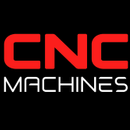Disadvantages of Using CNC Machines in the USA vs. Overseas Companies

Disadvantages of Using CNC Machines in the USA vs. Overseas Companies
1. Higher Labor Costs
USA: Labor costs in the USA are significantly higher compared to many overseas countries. This includes wages, benefits, and additional overhead costs associated with employing skilled workers to operate CNC machines.
Overseas: Many countries, particularly in Asia, have lower labor costs, allowing them to operate CNC machines more cost-effectively.
Impact: Higher operational costs in the USA can lead to higher prices for machined products, reducing competitiveness in the global market.
2. Regulatory Compliance and Environmental Standards
USA: Stringent regulatory requirements for safety, health, and environmental standards can increase operational costs. Compliance with OSHA (Occupational Safety and Health Administration) and EPA (Environmental Protection Agency) regulations requires significant investment in safety equipment and environmental controls.
Overseas: Some overseas companies operate in regions with less stringent regulatory requirements, reducing compliance costs.
Impact: Compliance with these regulations, while beneficial for worker safety and environmental protection, can add significant costs to CNC operations in the USA.
3. Higher Overhead and Facility Costs
USA: The cost of maintaining and operating facilities, including utilities, property taxes, and insurance, tends to be higher in the USA.
Overseas: Many overseas countries offer lower facility costs and may provide government incentives for manufacturing operations.
Impact: Higher overhead costs in the USA can reduce profit margins and increase the final cost of products.
4. Supply Chain and Raw Material Costs
USA: The cost of raw materials and supply chain logistics can be higher due to tariffs, transportation costs, and the need to import certain materials not readily available domestically.
Overseas: Countries with access to local raw materials and established supply chains can reduce production costs.
Impact: Higher raw material and logistics costs in the USA can make CNC machining more expensive compared to overseas competitors.
5. Economic Scale and Production Volume
USA: Smaller production volumes and higher customization requirements can lead to higher per-unit costs. American manufacturers may focus on high-mix, low-volume production.
Overseas: Many overseas manufacturers benefit from economies of scale by producing high volumes of standardized products, reducing the cost per unit.
Impact: The inability to achieve similar economies of scale in the USA can result in higher production costs and less competitive pricing.


